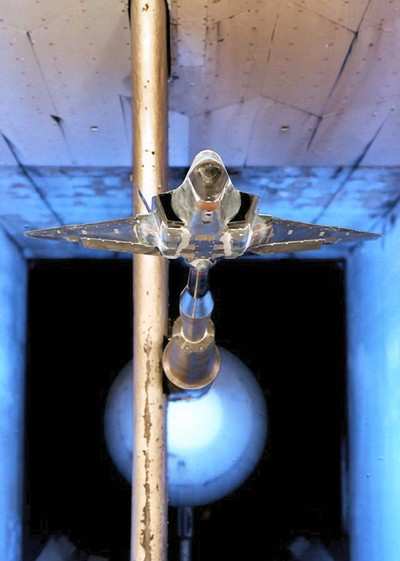Trials Began With 1967 Tests For C-5A Galaxy
Lockheed Martin celebrated 40 years of aircraft testing in its
Low Speed Wind Tunnel (LSWT) this week. On September 20, 1967 the
first aircraft test, a crew egress trial for the C-5A Galaxy, was
conducted.

As one of a handful of large subsonic wind tunnels in the
country, the Marietta wind tunnel has logged 104,800 hours of
testing large scale aircraft models, full-scale automobiles, race
cars and structures such as satellite dish antennas and oil derrick
models at wind speeds topping the forces of a Category 5
hurricane.
"Before an aircraft ever takes to the sky, we put a model of it
in the wind tunnel. Literally since the Wright Brothers, no
airplane has taken flight without wind tunnel testing because it is
still one of the best ways to learn how an aircraft will perform,"
said Joe Patrick, manager of Model Operation and Test for Lockheed
Martin Aeronautics in Marietta . "Wind tunnel testing is also a
critical component design of passenger cars, trucks and race cars.
In fact, NASCAR regularly sends top-finishing cars here to ensure
they meet specifications."
The Marietta wind tunnel is one of only four wind tunnels in the
United States that can accommodate large scale aircraft models.
Over the past four decades, more than 32 aircraft types have
recorded at least 100 test hours, with seven aircraft types
recording more than 1,000 test hours.
The three F-35 Lightning II Joint Strike Fighter variants --
conventional takeoff, short takeoff/vertical landing, and Naval
aircraft carrier variant -- have logged 13,037 hours so far. This
puts Lightning II wind tunnel test hours ahead of the 6,341 for the
Marietta-built C-130 Hercules transport and 2,744 for the F-22
Raptor air dominance fighter, which rank second and third on the
total test hour list. The LSWT is also one of only two wind tunnels
that test both government and commercial vehicles on a regular
basis.
The relatively low speeds produced in the LSWT are especially
useful for testing aircraft in the approach to landing and
post-takeoff flight regimes. High yaw testing and stores separation
tests, such as weapons or external fuel tanks released from an
aircraft, are other areas where the wind tunnel has proven
especially beneficial in aircraft testing.
 The Low Speed Wind Tunnel is a
closed loop system, nearly 370 feet long and more than 75 feet
wide. The air is moved through the loop by a 39-foot diameter fan
powered by a 4,160 volt, 9,000 horsepower motor, which turns the
fan at a maximum of 250 revolutions per minute.
The Low Speed Wind Tunnel is a
closed loop system, nearly 370 feet long and more than 75 feet
wide. The air is moved through the loop by a 39-foot diameter fan
powered by a 4,160 volt, 9,000 horsepower motor, which turns the
fan at a maximum of 250 revolutions per minute.
Updated continuously over the years, the Low Speed Wind Tunnel
now features a digital data acquisition system; large-screen liquid
crystal and plasma displays in the control room that allow more
data to be displayed as the tests progress; better cooling to
maintain a constant temperature and pressure, which allows for more
accurate data collection; and an improved data reduction
system.
 ANN's Daily Aero-Term (05.10.24): Takeoff Roll
ANN's Daily Aero-Term (05.10.24): Takeoff Roll Aero-News: Quote of the Day (05.10.24)
Aero-News: Quote of the Day (05.10.24) Aero-News: Quote of the Day (05.11.24)
Aero-News: Quote of the Day (05.11.24) ANN's Daily Aero-Term (05.11.24): IDENT Feature
ANN's Daily Aero-Term (05.11.24): IDENT Feature ANN's Daily Aero-Linx (05.11.24)
ANN's Daily Aero-Linx (05.11.24)




